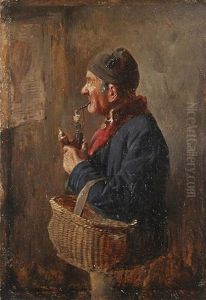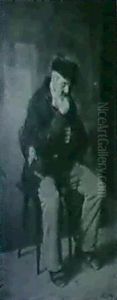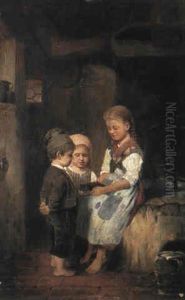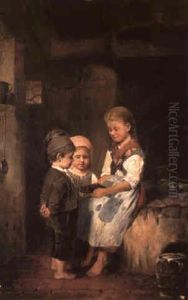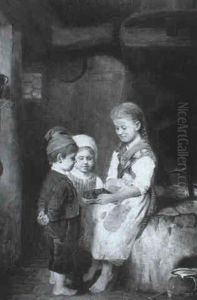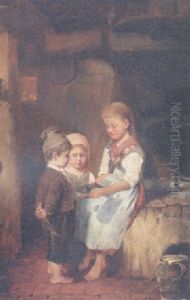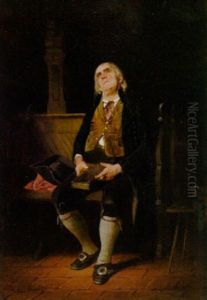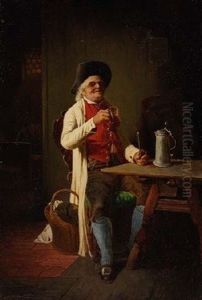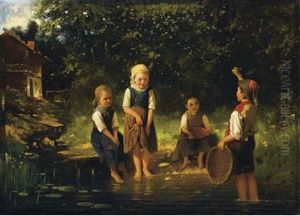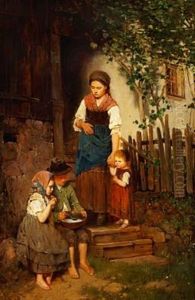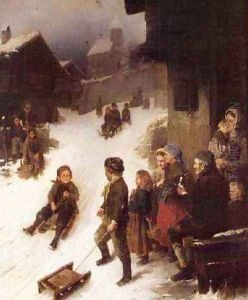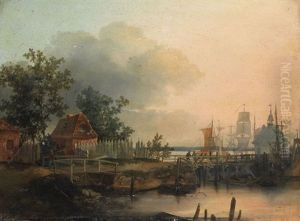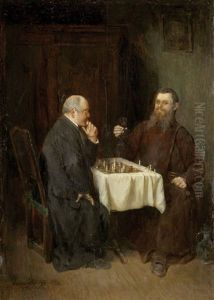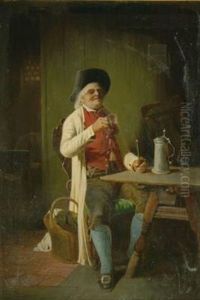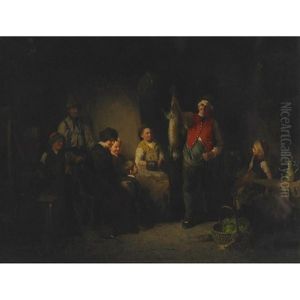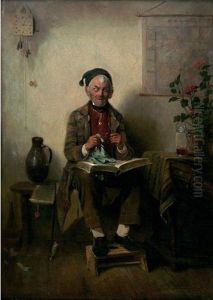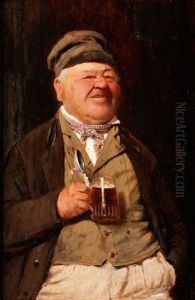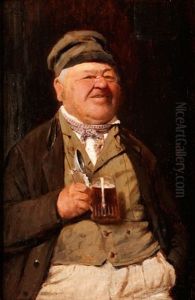Johann Ferdinand Julius Hintze Paintings
Johann Ferdinand Julius Hintze was a 19th-century German artist, known primarily for his work in painting. Born in 1800, in an era when the arts were undergoing significant transitions, Hintze's career would have unfolded during a period marked by the aftermath of the Napoleonic wars and the rise of Romanticism in art.
While there is limited information readily available about his personal life and artistic training, it is known that Hintze would have been active during a time when artists were increasingly interested in expressing emotion, exploring the sublime in nature, and delving into national history and folklore for subject matter. These themes were common in Romantic art, a movement that began in the late 18th century and reached its peak during the first half of the 19th century.
Despite the lack of extensive documentation on Hintze's life and work, it is likely that he would have been engaged with the artistic circles of Germany, potentially influenced by prominent figures of the time such as Caspar David Friedrich, known for his atmospheric landscapes, or Philipp Otto Runge, who explored the symbolic and spiritual aspects of art.
Johann Ferdinand Julius Hintze's death in 1867 would have marked the end of his contributions to the art world. By this time, the Romantic movement had begun to give way to new art movements such as Realism and Impressionism, which focused more on representing everyday life and the effects of light and color. While Hintze may not be as widely recognized as some of his contemporaries, his work remains a testament to the rich artistic traditions of 19th-century Germany.
Without more specific information about Hintze's oeuvre or any major works he may have produced, it is difficult to provide a more detailed account of his artistic achievements. However, as with many artists of the past, it is possible that further research and art historical inquiry could bring to light more about his contributions to the period's artistic landscape.
